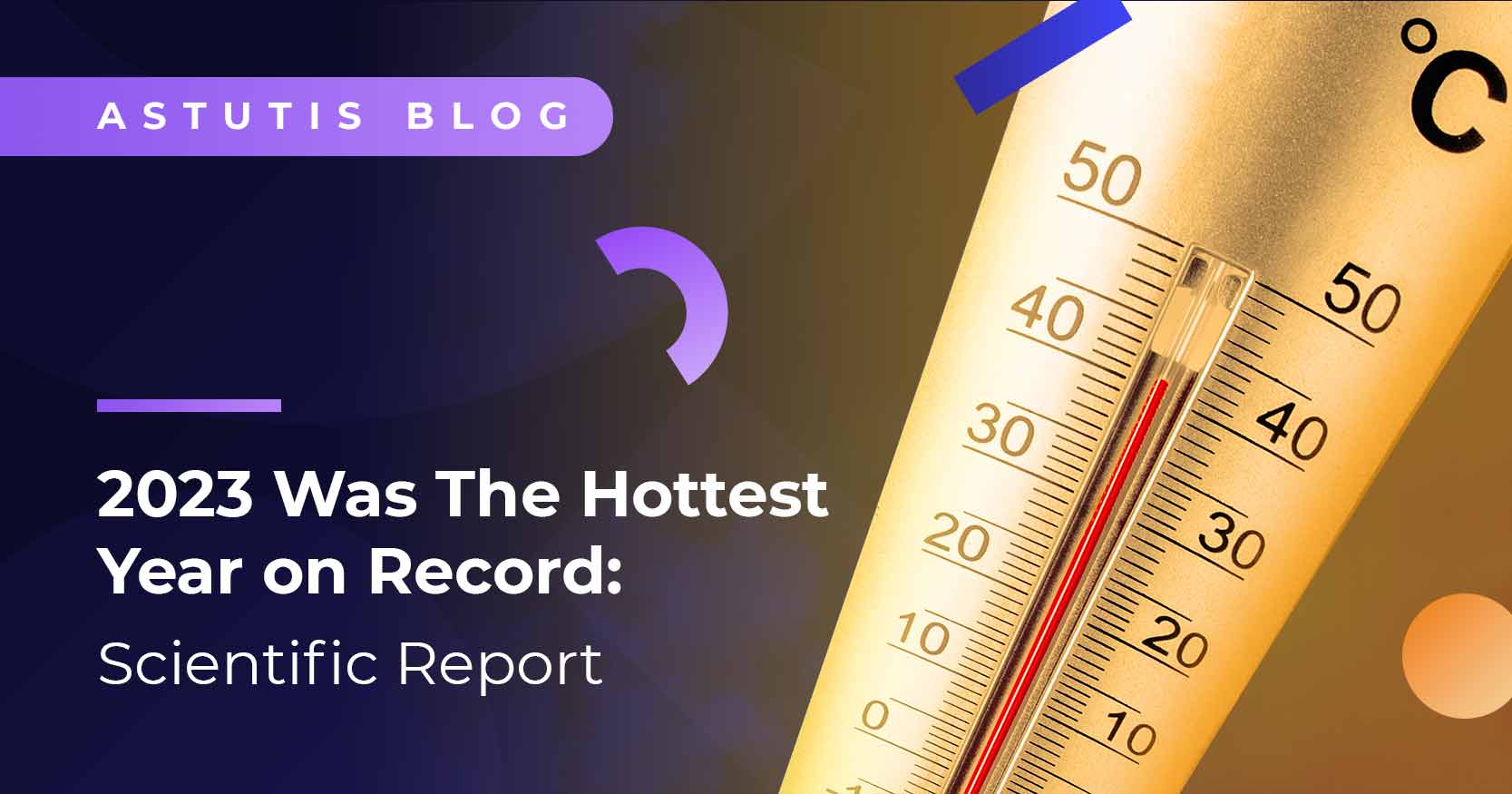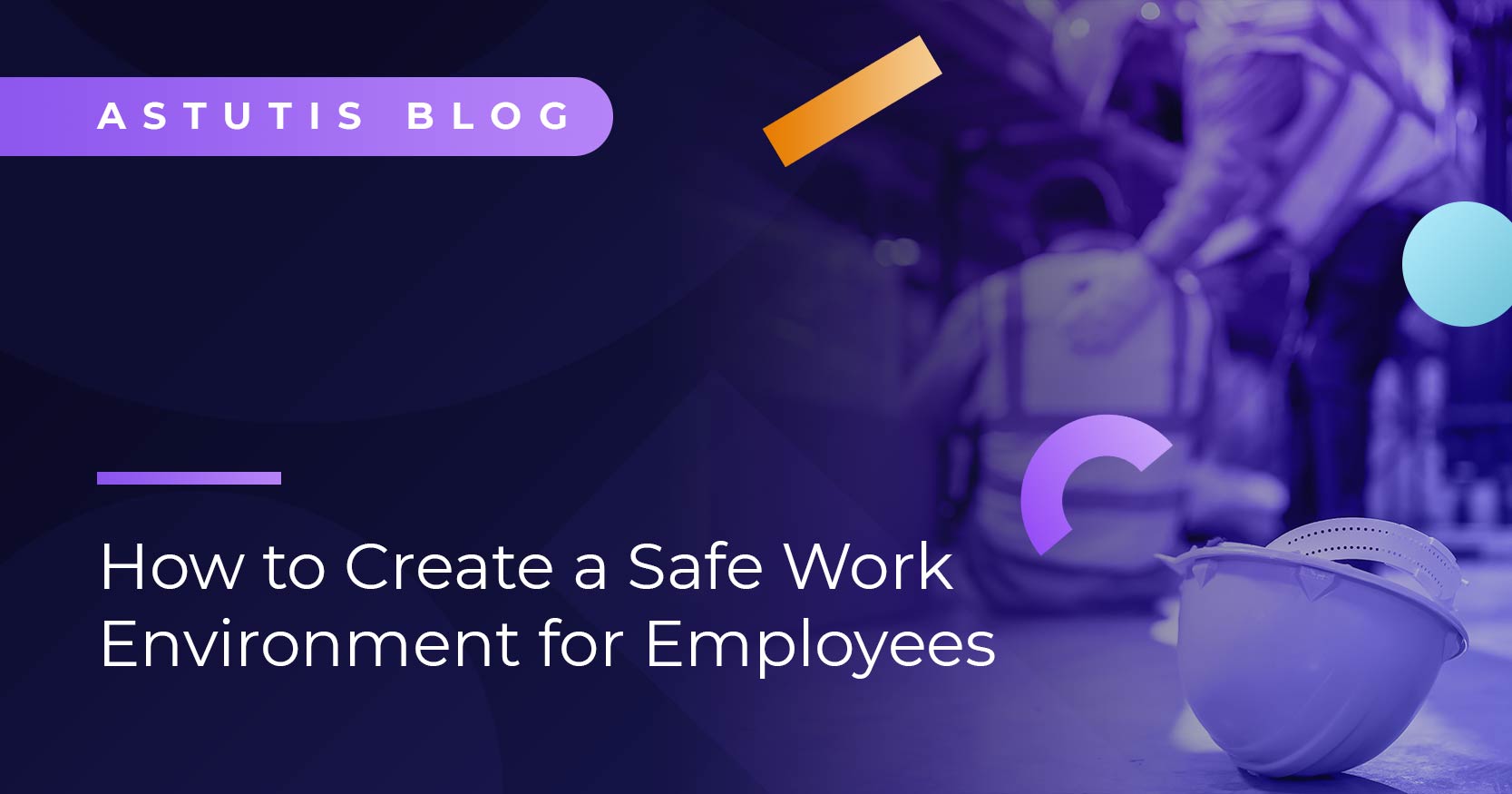Heat in the Workplace: Assessing the Risk
A hot working environment can pose serious health risks and each year thousands of people become sick from heat-related illnesses. Learn about how to assess the heat risk within an organisation.
While the weather here in the UK might have taken a slight turn for the worse, we have - if only on the calendar - officially marked the start of British summertime and in month alone, it might be timely to revisit temperature in the workplace and examine how this can affect staff health and productivity – remembering the old boy scout motto it’s best to ‘be prepared'….!
Many people consider heat-related illness as a problem that would potentially afflict labourers that work outside rather than those indoors, however, industrial, factory and warehouse employees can be as susceptible to temperature changes as those working in the elements directly. Confined spaces, with the addition of appliances that generate heat, can just as easily mean that workers can overheat and suffer exhaustion. PPE can further exacerbate the risks associated with heat stress.
On a recent visit to the HMS Royal Yacht Britannia moored at Leith docks in Edinburgh, (timely given the Queen’s recent big birthday celebrations); I learned that in its heyday, temperatures in the on-board laundry could frequently reach well in excess of 110 degrees Fahrenheit - depending on where the yacht was anchored.
Having been decommissioned for 19 years, I would like to think that certain measures would be put in place so these sorts of extreme temperatures wouldn’t happen today, however, recent research commissioned and published in a report by the Climate Vulnerable Forum entitled, ‘Climate Change and Labour: Impacts of Heat in the Workplace’ and recently released in Geneva, explores the fact that the world’s most vulnerable workers are still susceptible to the ravages of heat.
The Climate Vulnerable Forum consists of 20 member countries disproportionately at risk to the effects of climate change and the report, the research for which was conducted in tandem with the UNDP, WHO and ILO, highlights a rise in accidents and risk of accidents in the workplace together with a potential negative impact on global productivity of 7-10% by 2030. It is likely that the impact of heat stress in the workplace is most likely to affect the working poor and a predicted knock-on effect will be witnessed in international migrant flows – although it is likely that those most affected would not have the means to move location. The full report can be read here.
Temperature Rises can Impact Productivity
As well as increasing the likelihood of illness and injury in the workplace, hot working environments can contribute to efficiency levels resulting in a reduced pace of work which will ultimately be felt by the business in the form of reduced productivity levels.
According to a study by the Helsinki University in 2006, the optimal temperature range for the best output at work is between 69.8 degrees and 71.6 degrees Fahrenheit, while a 2004 study by Cornell University found that an temperature office temperature boost of 77 degrees Fahrenheit yielded the best productivity. Over 77 degrees, it is believed that productivity levels will decrease by over 1% for every 2 degrees that temperatures rise. At 95 degrees or higher, there is a decrease of 16.6% in productivity.
Estimate What it Means to your Business
Hot working environments can ultimately be detrimental to the organisation’s bottom line. An increased likelihood of injury and illness can not only affect productivity, but this can also translate into increased legal and insurance costs. OSHA has developed a tool on its website to estimate how much as accident can cost in terms of impacting profitability.
Using the estimator, choose ‘heat prostration’ as your injury type and apply their 3% default profit margin. One heat related incident alone can have direct associated costs of over $23,000 with a further doubling of indirect costs! Access the estimator here.
Heat can kill
A hot working environment can pose serious health risks and each year thousands of people become sick from heat-related illnesses. In 2014, in the US alone, at least 30 workers died from heat exposure.
The risk of accidents increases considerably with, for example, dizziness, sweaty hands and reduced mental alertness. A rise in body temperature and associated discomfort can also lead to irritability and/or frustration which could lead to less careful behaviour in a working environment which can in turn put the individual worker and possibly also his/her co-workers and the wider working environment at risk as temperatures rise.
However, in order to evaluate and manage the potential for employee heat-related illnesses, a basic understanding of how the body manages heat and hot conditions is first required.
How Does the Body React to Heat?
The human body reacts to heat by increasing the blood flow to the skin’s surface and by sweating. Much in the same way as putting the hot fan on in your car to cool the engine in hot weather (not that this is generally required of today’s models….I’m really showing my age here), this process acts to cool the body as heat is carried to the surface from within by the increased blood flow and sweat, in turn, evaporates. Heat can also be lost by radiation and convection from the body’s surface. However as temperatures rise, the body releases heat more slowly and as humidity levels increase, sweat evaporation decreases and stagnant air makes sweat evaporation even more difficult. With the combination of these 3 factors, there is an increased potential for health and safety concerns.
Have you Considered the Risks Inherent in Heat Stress in your Workplace?
Heat stress is an issue that needs wider consideration at all levels within an organisation, particularly if your employees undertake their work in an environment not controlled by air conditioning or in a work space that is difficult to cool. Heat impacts workers, the management of workloads and in turn, productivity therefore, this becomes a Management responsibility and it is essential that the risks of heat-related illness or injury are assessed.
According to the ILO (International Labour Organisation), too much heat in a workplace can result in employees suffering the following problems:
Safety
- Fatigue and dizziness
- Sweating palms (become slippery)
- Fogging of safety glasses
- Possible burns
- Lower performance/alertness
- Increased irritability
Health
- Heat stress/strain (distress)
- Heat cramps
- Heat exhaustion/heat stroke
- Heat rash (prickly heat)
- Fainting (syncope)
Assessing the Risks of Heat Stress
Begin your risk assessment by talking to the workers involved and their safety representatives (if there are any in your workplace) to establish whether they are suffering early signs of heat stress. If there is a problem, you may need to get help from others who are more experienced in determining the risk from hot environments, e.g. occupational hygienists or occupational health professionals. The HSE offers some good advice when looking at a risk analysis for heat stress. Links to further information can be found below.
When conducting a heat stress risk assessment, the major factors that need to be considered are:
- Work rate – the harder someone works the more body heat they generate;
- Working climate – this includes air temperature, humidity, air movement and effects of working near a heat source;
- Clothing and respiratory protective equipment – may mean that sweating and other means of the body regulating its temperature are not as effective;
- Age, build and associated medical factors of the worker – may affect an individual’s tolerance.
Further resources you may find helpful in conducting your risk assessment are linked below.
Protect your Staff and your Bottom Line
Not only does the impact of heat on workers reduce efficiency levels but it can also place organisations in potential liability situations if its management could have reasonably foreseen the effects of high temperatures. As employers, we are required to provide a safe working space – this includes limiting the exposure of employees to high temperatures and increasing the frequency of breaks in a cooler environment.
Various ‘heat stress indices’ have been developed over the years in order to protect worker against heat exposure, however, the most commonly used in Occupational Health and Safety is the WBGT (Wet Bulb Globe Temperature) index developed by the US Army. The WBGT index measures air temperature, radiant temperature, humidity and air movement, and is the basis for time limitations of work in different heat exposure environments. More information on the WBGT index can be found here.
Other heat stress indices worth taking a look at in the course of your risk assessment include:
- ISO 7933 - Required Sweat Rate index
- Predicted Heat Strain index
- Thermal Work Limit
Each index has its own benefits and limitations and some are more invasive than others to obtain measurements. You should consider using the index that most closely reflects your working environment.
Reducing the Risks
Reduce the sources of heat or remove entirely where possible:
- Control - the temperature using engineering solutions, e.g. change the processes, use fans or air conditioning, use physical barriers that reduce exposure to radiant heat.
- Provide - mechanical aids where possible to reduce the work rate.
- Regulate - the length of exposure to hot environments by: allowing workers to enter only when the temperature is below a set level or at cooler times of the day; issuing permits to work that specify how long your workers should work in situations where there is a risk; providing periodic rest breaks and rest facilities in cooler conditions.
- Prevent - dehydration. Vital lost water must be replaced. Provide cool water in the workplace and encourage workers to drink frequently and in small amounts before, during (where possible) and after working.
- Provide PPE - Specialised personal protective clothing is available which can incorporate personal cooling systems or breathable fabrics. The use of some protective clothing or respiratory protective equipment may increase the risk of heat stress.
- Provide training - for your workers, especially new and young employees, telling them about the risks of heat stress associated with their work, what symptoms to look out for, safe working practices and emergency procedures.
- Allow - workers to acclimatise to their environment and identify which workers are acclimatised or assessed as fit to work in hot conditions.
- Identify - employees potentially most susceptible to heat stress due to illness, condition or medication that may contribute to the early onset of heat stress, e.g. pregnant women or those with heart conditions. You may need advice from an occupational health professional.
- Monitor - the health of workers at risk. Where a residual risk remains after implementing as many control measures as practicable, you may need to monitor the health of workers exposed to the risk. You should then seek advice from an occupational health professional.
- Offer – appropriate rest time rest time. Implement work/rest schedules according to temperature and humidity levels allowing workers to shake off excess heat, slow down the production of internal body heat, reduce the heart rate, and improve blood flow to the skin. Recommended rest time is dependent on the clothing worn - the heavier the clothing, the more rest time will be required.
Well, here at the Astutis offices, we’ve got our fans braced for work and our polo shirts at the ready! We hope your summer is a warm, but not uncomfortable one!
Useful Links:
- Centre for Disease Control/NIOSH: Criteria for a Recommended Standard Occupational Exposure to Heat and Hot Environments
- HSE: British, European and International Standards Relevant to Working in Thermal Environments
- ILO: Physical Hazards - Heat in the Workplace
- ISO: ISO 7933:2004 Ergonomics of the thermal environment - Analytical determination and interpretation of heat stress using calculation of the predicted heat strain
- OSHA: Using the Heat Index: A Guide for Employers
- OSHA: Heat Safety App for iPhone and Android
- Earth friendly tips to beat the heat
Interested in our range of courses? Click the button below to view all our courses!
Related Blogs

Real Life Stories









